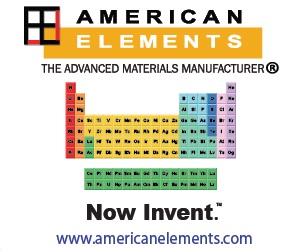
April 22 - 26, 2024
Seattle, Washington
May 7 - 9, 2024 (Virtual)
Symposium Supporters
2024 MRS Spring Meeting & Exhibit
QT02.12.01
[1] M. J. Gilbert, Comm. Phys. 4, 1-12 (2021).
[2] A. Markou et al., Comm. Phys. 4, 104 (2021).
[3] J. Gibbons et al., Phys. Rev. Appl. 18, 024075 (2022).
[4] B. Sahoo, A. Frano and E. E. Fullerton, Appl. Phys. Lett. 123, 032404 (2023).
Spin-Orbit Studies of Ferrimagnetic, Antiferromagnetic and Oxide Weyl Semimetals
When and Where
Apr 26, 2024
10:30am - 11:00am
10:30am - 11:00am
Room 421, Level 4, Summit
Presenter(s)
Co-Author(s)
Eric Fullerton1
University of California-San Diego1
Abstract
Eric Fullerton1
University of California-San Diego1
Topology has emerged in many areas of magnetism that included both chiral spin structures and emergent electronic structures such as Weyl semimetals [1]. The further lowering of the symmetry of the crystal via strain or magnetic order can provide additional functionality. I will discuss recent studies of thin films of candidate Weyl semimetals and their potential use as sources of spin currents in spin-orbit torque devices. Materials studies include ferrimagnetically ordered CrPt3 [2], antiferromagnetically ordered FeRh [3] and transition metal oxides such IrO2 [4], CaIrO3.and NdNiO3. For each we have grown epitaxial chemically ordered films and studied the spin structure, magneto-transport properties, and spin-to-charge conversion that is a source for spin-orbit torques. For CrPt3 we obtain large anomalous Hall conductivity of 2000 S/cm and large negative magneto-resistance consistent with Weyl semimetal properties. However, this, somewhat surprisingly, does not manifest itself in enhanced charge-to-spin efficiencies. For the antiferromagnetic FeRh phase we observe extremely large, strongly temperature-dependent exotic spin torques with a geometry that is tied to the magnetic ordering direction. Many 5d transition metal oxides such as IrO2 and CaIrO3 have unique electronic structures, where the density of states near the Fermi level is dominated by only 5d electrons with strong spin orbit coupling. IrO2 is one of the simplest of these oxides is a Dirac nodal line semi-metal that exhibits a charge-to-spin conversion that is roughly 8 times larger than that of Pt. I will highlight the potential uses for complex materials that generate large, tunable spin-orbit torques. They may be used in conventional computing to non-volatile memory schemes, or for neuromorphic computing approaches exploiting spin dynamics in more complex magnetic systems. This work is supported by US Department of Energy under Grant No. DE-SC0019273[1] M. J. Gilbert, Comm. Phys. 4, 1-12 (2021).
[2] A. Markou et al., Comm. Phys. 4, 104 (2021).
[3] J. Gibbons et al., Phys. Rev. Appl. 18, 024075 (2022).
[4] B. Sahoo, A. Frano and E. E. Fullerton, Appl. Phys. Lett. 123, 032404 (2023).
Symposium Organizers
Zhong Lin, Binghamton University
Yunqiu Kelly Luo, University of Southern California
Andrew F. May, Oak Ridge National Laboratoryy
Dmitry Ovchinnikov, University of Kansas
Symposium Support
Silver
Thorlabs Bronze
Vacuum Technology Inc.
Thorlabs Bronze
Vacuum Technology Inc.
Session Chairs
Xia Hong
Dmitry Ovchinnikov



















